Bacillus amyloliquefaciens (BAA) is a type of bacterium that is found in soils throughout the world and also on dried foods and fresh produce.
Many strains of these bacteria enhance plant growth and inhibit plant pathogens, greatly improving the health of plants. They colonize the roots of plants and reduce plant disease by both direct and indirect action.
BAA strains produce a number of chemicals, including a number of antibiotics that inhibit the germination of fungal spores and the growth of the fungi.

We link to vendors to help you find relevant products. If you buy from one of our links, we may earn a commission.
In addition, the bacteria stimulate the plant to activate their natural resistance mechanisms. This provides additional control of pathogens.
Many strains of BAA are so helpful to plants that they are known as plant growth-promoting rhizobacteria (PGPR) – a designation for powerful bacteria that improve plant health.
In this guide, we will review how Bacillus amyloliquefaciens can improve plant health and provide tips on how to use these biocontrol agents.
What You’ll Learn
- BAA Strains Vary in Their Properties
- How Can BAA Help Your Garden?
- Bacillus amyloliquefaciens is Highly Resistant to Chemicals
- BAA is Safe for Humans and Other Organisms
- Plant Pathogens Targeted by Bacillus amyloliquefaciens
- How to Apply BAA to Prevent Disease
- Naturally Occurring Bacillus amyloliquefaciens Offers Many Benefits
BAA Strains Vary in Their Properties
Just like the closely related bacteria Bacillus subtilis, B. amyloliquefaciens is composed of many different strains, which vary in their production of antibiotics and ability to colonize plants.

Research has been conducted on a dizzying array of strains, but most commercial formulations are comprised of a few key strains, especially D747 (often sold as Double Nickel or Stargus).
The powerhouse strain FZB42 that is sold commercially has been found to be a different species of Bacillus and is now known as B. venezensis.
How Can BAA Help Your Garden?
The biopesticide BAA can both help prevent damage from pathogens and act as a biofertilizer.
These bacteria live in a prime location – they are components of the rhizosphere – the lush area around plant roots where the plants secrete sugars and vitamins that benefit the growth of the microbes in this area.
In addition, a number of companies sell BAA to control a variety of plant-parasitic nematodes.
The Bacteria Colonize Plant Roots
BAA starts its growth on the primary roots. First, it grows underneath the outermost cells. Then it spreads along the root surfaces.
By being in this key location, the bacteria block the growth of pathogens on the roots.
The plants also benefit from the presence of BAA because these bacteria produce compounds that stimulate plant growth and are taken up by the roots.
This makes these bacteria plant growth-promoting rhizobacteria (PGPR) – like their close relative Bacillus subtilis.
The end result is that plants grow better due to the fertilization that the bacteria provide. They provide both nitrogen and phosphorus.
In addition, BAA activates the plants’ own resistance system, which is active throughout the whole plant. This helps the plant fend off foliar pathogens.
BAA Outcompetes Other Microbes
These bacteria use several mechanisms that enable them to prevail over other microbes in the soil. First, they tie up key nutrients that other organisms need for survival.
For example, iron is necessary for growth and is present at low concentrations in the soil. BAA produces compounds called siderophores that bind the iron and prevent other microbes from accessing it.
They also produce antibiotics that affect other microbes. Like Bacillus subtilis, BAA produces compounds like iturins and fengmycin that inhibit the germination of fungal spores and the development of the fungal germ tubes.
In addition, the bacteria produce enzymes that break down other microbes! BAA can produce antibiotics that dissolve other bacteria. And some strains produce chitinases – enzymes that break down the fungal cell walls that are composed of chitin.
Bacillus amyloliquefaciens is Highly Resistant to Chemicals
These bacteria have another advantage over other bacteria in the soil – they are unusually resistant to the chemicals that plants produce to defend themselves.
Not only that – they are also normally unaffected by nematicides, herbicides, and most fungicides.
They could be affected by antibiotics used to control plant pathogenic bacteria, but these compounds are usually only applied to the leaves of apple or pear to control fire blight.
It is highly unlikely that foliar antibiotic applications would affect soil inoculants.
BAA is Safe for Humans and Other Organisms
Since BAA is a common soil inhabitant and is found naturally on fresh produce, it is likely that people are exposed to it on a regular basis.
The species is not known to produce any toxins that affect mammals and has never been associated with food-borne disease outbreaks.
Extensive testing for the registration of strain D747 as a pesticide with the Environmental Protection Agency (EPA) found no effect on non-target organisms, including rats, fish, honeybees, and plants.
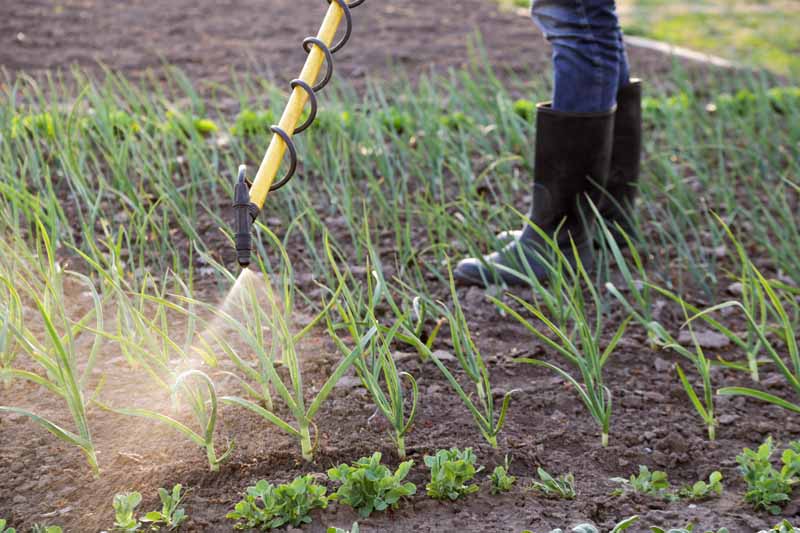
The only requirements for personal protective gear are for pesticide handlers that would frequently be exposed to the strain for prolonged periods. They are required to wear long-sleeved shirts, a dust/mist filtering respirator, and waterproof gloves.
Plant Pathogens Targeted by Bacillus amyloliquefaciens
This organism affects a range of fungal and bacterial pathogens. The original EPA application lists both soilborne and foliar pathogens.
Soilborne fungal pathogens include Fusarium, Pythium, Rhizoctonia, Phytophthora, and Verticillium, while foliar ones include several rusts, powdery mildew, downy mildew, Botrytis cinerea, and Alternaria.
Foliar bacterial pathogens include Pseudomonas syringae pv. tomato and Xanthomonas. In Canada, the strain is registered to use as a preventative measure to control fire blight.
How to Apply BAA to Prevent Plant Disease
While B. amyloliquefaciens will not cure plant diseases, it can prevent a number of them from occurring on vegetables, turf, fruit trees, ornamentals, and greenhouse plants.
BAA comes in two types of formulations.
One is a water soluble liquid concentrate that can be sprayed, applied with ground equipment, or added into irrigation.
The other type is a talc-based powder that is applied in a dry planter box.
Here are some options:
BONIDE® Revitalize® Biofungicide with B. amyloliquefaciens
You can find Bonide Revitalize as a concentrate to mix with water or in ready-to-spray bottles available from Arbico Organics.
Monterey Complete Disease Control
Monterey Complete Disease Control is also available as concentrate and ready-to-spray from Arbico Organics.
Arbico Organics provides a number of products that contain BAA.
Another option is Arbor Biofungicide concentrate available in 16-ounce bottles from Gardener’s Supply Company.
These bacteria don’t survive storage as long as other soil inoculants, and you should be careful about storing them as recommended on the label.
You will also need to reapply the bacteria each season. They don’t cause long-term changes in the soil.
You can combine BAA with other soil inoculants. Trichoderma and arbuscular mycorrhizal fungi (AMF) can all coexist with Bacillus amyloliquefaciens.
Naturally Occurring Bacillus amyloliquefaciens Offers Many Benefits
Bacillus amyloliquefaciens colonizes plant roots, putting it in a prime position to outcompete pathogens for growth on the plant.
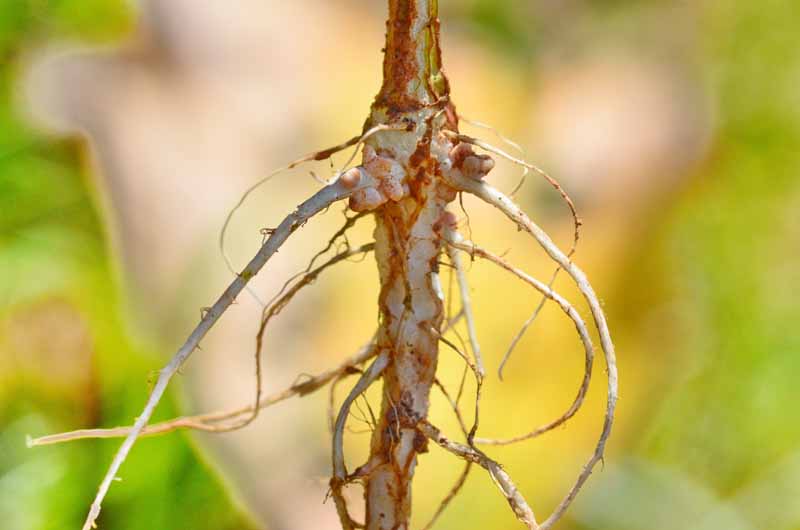
These bacteria fertilize the plant by providing nutrients that are in short supply and producing chemicals that induce the plant grow. They also induce the plant to activate its own resistance mechanism, therefore controlling even more pathogens.
This species of Bacillus also outcompetes other microbes in the soil and can inhibit both bacteria and fungi.
Have you used BAA to prevent disease in your garden? If so, let us know how it worked in the comments.
And read on for information on other biofungicides and biopesticides to include:
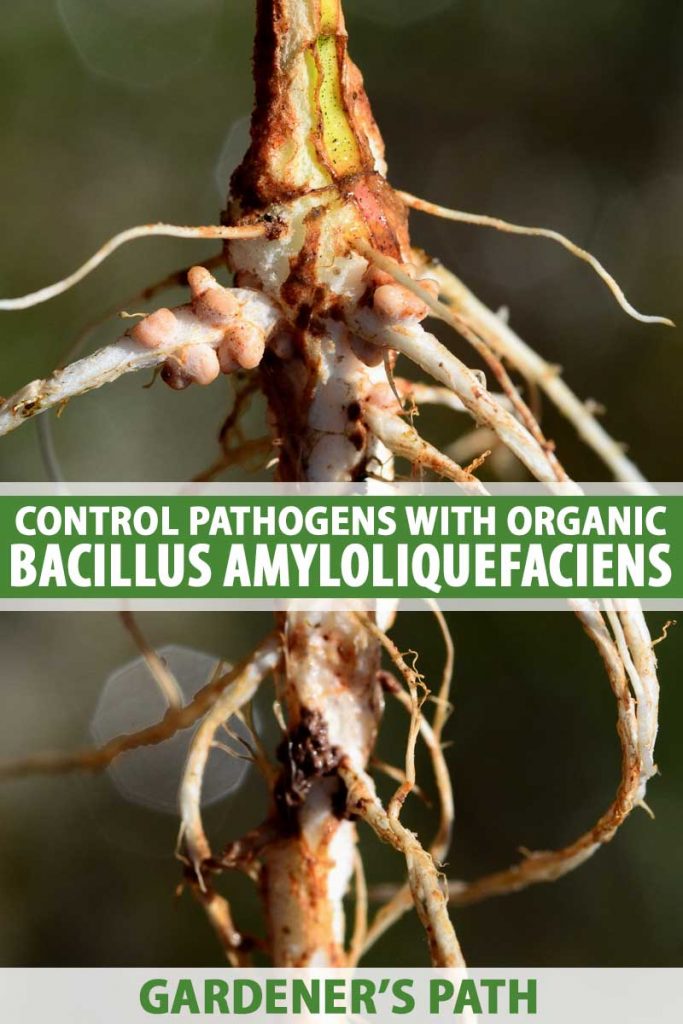

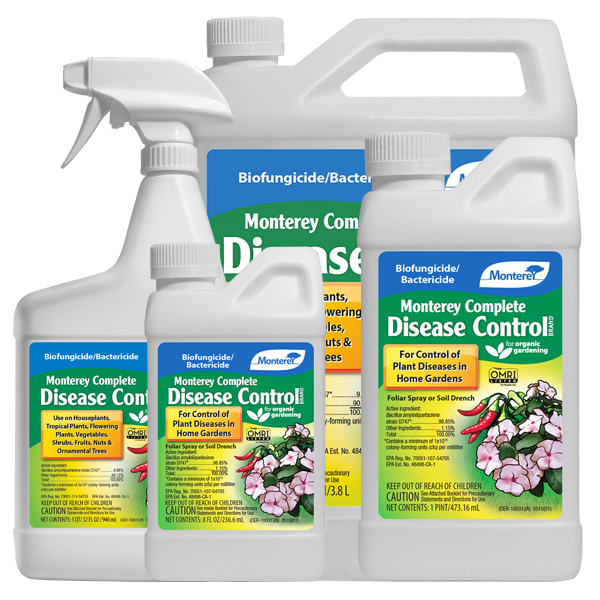
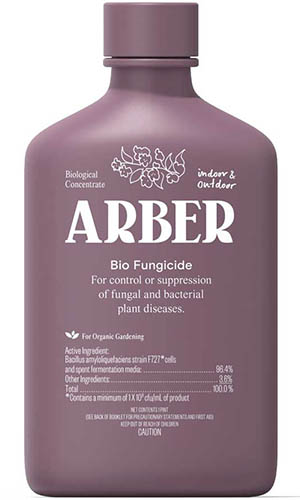
Hi Helga –
Do you have any leads as to where I can purchase Bacillus amyloliquefaciens strain D747 in Canada? I have looked everywhere online, and the US suppliers I spoke to still won’t ship it to here as they seem to not been updated that these are allowed in Canada now. Thanks!
Hi Dee,
I found a source! I did an advanced search with Canada as a required word and found a registration link for BAA in the late 1990s. The company is still active and sells Double Nickel 55 and LC.
Check out this link for United Agri Products – Canada.
Hi Helga. Thanks for the best info I could find about BAA 747.
I’ve been wondering how BAA (and other bio fungicides) interacts with other beneficial microbes in the rhizosphere. Does it interfere with mycorrhyzal relationships? Thanks again. John
Hi John,
Thank you so much for your feedback on the article! We are delighted that you found it to be useful.
That is an excellent question, and one that I had for a while.
It appears that other beneficial soil microbes are still highly effective in the presence of mycorrhizae, and sometimes they even act synergistically. Good news, indeed!
Hi! I live about 30 miles south of San Antonio, TX, what’s known as part of the Deep South. It’s been unusually rainy here this year and cooler (80s and 90s mostly, not 100s) so my fireblight immune Orient pear tree developed fireblight. I drenched both sides of the leaves to dripping with the B. amyloliquefaciens and waited. The cutter ants got what was left of the leaves (again!) so I couldn’t tell if the tree was still alive until it finally leafed out again. The fireblight is gone! A rare success story here, but a hopeful one, thanks to… Read more »
That’s great to hear! Thank you for sharing 🙂
I need an organic solution for treating brown patch in an Arizona (Phoenix) Bermuda turf lawn that will not harm my miniature dachshund. I was going to try Bonide Revitalize Biofungicide. Would you recommend this product as safe for small (10lb) dogs?
Bonide Revitalize Biofungicide contains Bacillus amyloliquefaciens, which is safe to use around pets. I would keep your dog off the lawn while it is still wet from treatment, but otherwise, it should be perfectly fine.
Does this bacteria achieve the protection against fungi whether you use it as a soil drench or as a foliar spray? Root colonization is sufficient for all around increased immunity or not? At the moment I want to protect my tomato crop from early blight and a number of veggie crops from mildew. I started using B.a as a drench. Do you think I need to use it in a foliar spray instead or as well?
Thank you so much for your article Its the best I have found so far for home gardeners.
Yes, you can use Bacillus amyloliquefaciens as both a soil drench and a foliar spray. Obviously, the effectiveness of either application depends on the type of fungus and whether it lives or spreads through the soil or through the air/water. For blight, I’d recommend both to be on the safe side, but one or the other will also address the problem.
Hi how would one store the unused portion of these products? How long does it stay viable in its container? Thank you.
Generally speaking, I’d avoid overbuying any biocontrol agents in large quantities to avoid long-term storage whenever possible. Recommendations can vary depending on the formulation and packaging, so checking the label on your selected product is recommended. B. amyloliquefaciens sprays should be stored in the original packaging, closed tightly and placed away from direct sunlight and out of extreme heat. The label may include an expiration/use by date. Any unused product that will not be used as directed must be disposed of properly according to local regulations, and should not be poured down drains. I wasn’t able to find any specifics… Read more »
I have Bonide Revitalize concentrate. Can it be tank-mixed and sprayed with other garden chemicals?
For example, in the fall and early spring I will dormant spray my peaches with neem oil + copper (I happen to have captain jack’s neem oil and monterey liqui-cop). Could I add the Revitalize to the tank when I dormant spray? Will the neem oil or the copper kill the BAA bacteria?
I also have Bonide Infuse that I will use in the spring for brown-rot. Could the Revitalize be tank-mixed with Infuse?
It’s OK to combine B. amyloliquefaciens products like Revitalize with other soil inoculants that act as biofungicides, but I wouldn’t recommend mixing it with other garden chemicals or spraying other products at the same time as they may impact its effectiveness. It’s generally best to rotate fungicides rather than mixing with a chemical fungicide like propiconazole, the active ingredient in Infuse – but note that B. amyloliquefaciens may be effective against brown rot as well.